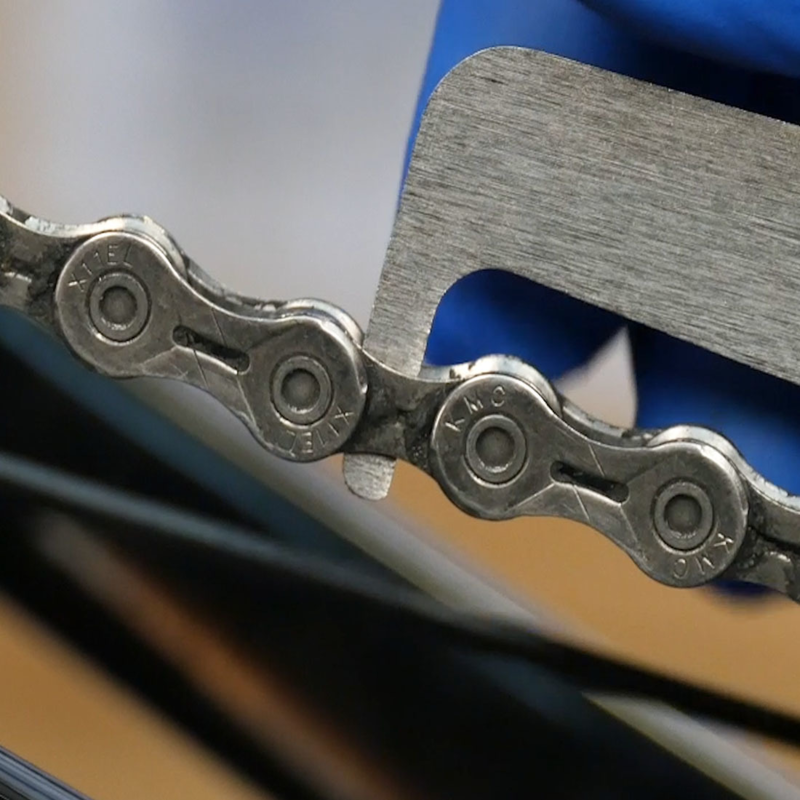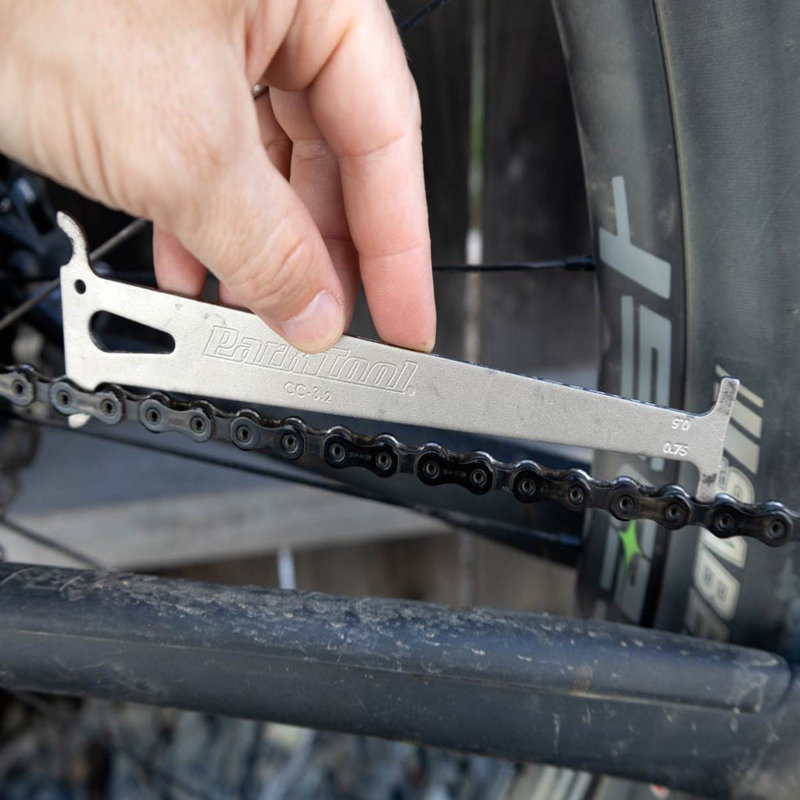Maintaining your bike is essential for optimal performance, and one crucial component to monitor is the bike chain. Many cyclists often overlook the chain’s condition until they experience issues while riding. Knowing when to replace a bike chain can prevent poor performance and extend the overall lifespan of your bike. In this article, we’ll break down the factors that influence chain wear, how to check the chain’s condition, and the best practices for replacing it. Ultimately, understanding your bike’s chain can significantly enhance your riding experience.
Understanding Chain Wear and Why It Matters
What Causes Chain Wear?
Chains experience wear and tear for several reasons. First and foremost, friction is a significant factor. As you ride, your chain constantly comes into contact with gears and derailleurs. Over time, this friction can result in a stretched chain. Additionally, environmental conditions can accelerate wear. Riding in wet weather or on dirty roads introduces grime and moisture into the chain links. Both elements can cause damage over time. Similarly, less frequent cleaning can allow dirt and debris to build up. Thus, it is essential to maintain your chain regularly.
Moreover, the materials used in your chain impact how quickly it will wear. High-quality chains often have better resistance to wear compared to cheaper options. For example, a chain made from durable steel will generally last longer than one composed of lower-quality materials. Hence, understanding the type of chain you have is vital for predicting usability. Knowing this allows you to budget to replace a bike chain and plan your riding schedules. Ultimately, being informed about chain wear can lead to better decisions regarding maintenance or replacements.
Why Regular Checks Are Necessary
Regularly checking your bike chain can significantly improve its performance. As a cyclist, it is vital to understand the key indicators of chain wear. Catching wear early can prevent issues down the line. For instance, a worn-out chain can lead to excessive wear on your bike’s gears. This kind of damage can prove costly. Additionally, a stretched chain can compromise shifting performance. Smooth gear changes are essential for enjoyable journeys. Therefore, regular inspections are non-negotiable.
Many bikers may not realize that checking the chain’s condition takes only a few minutes. A chain checker tool is an invaluable investment for cyclists. This simple instrument measures the stretch and allows you to know when a replacement is necessary. Most experts recommend checking your chain at least once a month. If you ride frequently, you may want to check even more often. Being proactive in monitoring your chain will enhance its lifespan and the bike’s overall performance.

Signs Your Chain Needs Replacement
Common Warning Signs
Knowing the warning signs of a worn-out bike chain can save you from future headaches. First, a noticeable drop in performance often indicates a chain issue. If your bike is not shifting smoothly, it could be a sign of chain wear. Additionally, if you hear grinding noises when pedaling, that’s another red flag. These noises often result from improper engagement between the chain and gears. Ignoring these symptoms can worsen the situation.
Another sign is the appearance of the chain. A shiny, worn surface can be a clear indication that it’s time to replace a bike chain. If the links have become stiff or rusty, they might not flex properly anymore. Chains should have a smooth appearance and movement. Furthermore, uneven wear patterns can signal that the chain has outlasted its usability. Ignoring these visual cues can lead to more extensive repairs. Thus, inspect your bike chain at every opportunity to catch these signs early.
Using a Chain Checker Tool
The chain checker tool is a straightforward and effective way to assess your chain’s health. These tools generally come in two variants: a 0.5% and a 0.75% wear check. Essentially, the 0.5% tool will indicate if your chain is starting to stretch. This is the threshold where replacement is advisable. On the other hand, the 0.75% tool gives you a heads-up that the chain needs immediate attention. Therefore, investing in a chain checker can save you time and money.
Using a chain checker is simple and does not require technical skills. You place it on the chain and see how well it fits. If the tool easily fits, it’s time for a chain replacement. Compared to other maintenance tasks, checking your chain with this tool is quick. In less than five minutes, you can assess the chain’s health. Taking this small step can be the difference between an enjoyable ride and being stuck with a malfunctioning bike. So, always keep a checker handy for ongoing maintenance.
Factors Influencing Chain Longevity
The Impact of Riding Style
Your riding style greatly affects how long your chain will last. For instance, aggressive riders tend to wear chains out more quickly. Sudden accelerations, frequent gear changes, and hill climbs increase stress on the chain. Consequently, these factors lead to quicker wear. In contrast, casual riders with smooth pedal strokes may extend their chain’s lifespan. Therefore, it’s important to consider your riding habits when evaluating chain wear.
Additionally, the terrain you typically ride on plays a major role. If you find yourself frequently cycling on rough surfaces, this can significantly impact chain longevity. Bumpy, uneven roads cause the chain to slap against components. Normally, this results in friction and harmful vibrations. If your primary rides are on unpaved paths, be prepared for shorter chain lifespans. Calculating how different factors influence wear helps you make informed decisions regarding maintenance and replacements.
Maintenance Practices to Extend Lifespan
Regular maintenance is critical for maximizing your bike chain’s lifespan. Proper lubrication can reduce friction significantly while preventing dirt accumulation. Aim to lubricate your chain regularly, ideally every few rides. However, remember that over-lubrication can attract more dirt, negating its benefits. A light coat of lubricant is generally sufficient. Additionally, clean your chain using degreaser and a brush to remove any grime that has built up.
Moreover, consider using chain protectors to shield against external elements. These handy gadgets can help keep dust and debris out of your chain. Chain guides can also prevent unnecessary wear by keeping the chain aligned properly. If you invest time and resources into chain maintenance, you can enjoy better performance. Thus, establishing a regular maintenance schedule can have lasting benefits for your bike.

Best Practices for Replacing a Bike Chain
When to Replace Your Bike Chain
Replacing the bike chain at the right time is crucial. Most experts recommend changing the chain every 1,500 to 3,000 miles, depending on various factors. Your riding style, frequency, and chain material each play a significant role. However, it’s crucial to remember that chain wear is progressive. Therefore, set up a regular inspection schedule, even before you hit the mileage limit. By being proactive, you can avoid the stress that comes with a broken chain.
Another additional way to determine replacement time is based on the chain checker tool readings. If your chain slides easily into the 0.75% wear indicator, it’s time to replace it immediately. Waiting too long can cause the rear cassette and chainrings to wear out faster. Chain replacement is not just about preserving the chain but protecting other bike components too. Therefore, being diligent in checking the chain can save you more expenses in the long run.
Selecting the Right Replacement Chain
Choosing a suitable replacement chain can be tricky yet critical. Several factors must be considered, such as compatibility with your bike’s drivetrain. First, check the speed rating of your bike’s cassette. Most chains will indicate what speed they are designed for on the packaging. If you ride a 10-speed bike, make sure to select a 10-speed chain. Incompatibility can lead to performance issues down the line.
Moreover, it’s wise to invest in a high-quality chain. While the upfront cost may seem steep, high-quality chains often last longer. Additionally, they can handle rough conditions better than cheaper options. Similarly, understanding your riding style can guide your choice. A heavy-duty chain may be needed for aggressive or rugged riding conditions. In contrast, a lighter chain is better suited for casual road cycling. Always conduct thorough research before making a purchase.

Benefits of Timely Chain Replacement
Improved Performance
Replacing your bike chain promptly enhances overall ride quality. A new chain improves shifting performance, allowing for smoother transitions between gears. Better shifting reduces the strain on other components, such as derailleurs and cogs. In turn, this helps maintain your bike’s efficiency. A healthy chain will also contribute to a more enjoyable riding experience. Therefore, timely replacement benefits both the bike and the rider.
Cost Savings in the Long Run
Investing in regular chain replacements can save money long-term. A worn chain can drastically accelerate wear on your sprockets and derailleur, leading to costly replacements. By replacing the chain at appropriate intervals, you protect these components, extending their life as well. Consequently, proper maintenance and timely chain replacements can enhance the overall lifespan of your bike. Thus, focusing on maintaining your chain becomes a financially wise decision.
Conclusion
In summary, understanding how often to replace your bike chain is vital for maintaining peak performance. Regular checks for wear, coupled with timely replacements, can save you from inconveniences. By identifying warning signs and using a chain checker, you can stay proactive in your bike care. Factors such as riding style and maintenance practices play essential roles in chain longevity.
Furthermore, selecting the right replacement chain can make a significant difference in your biking experience. By considering the speed rating and material quality, you can make informed choices. Don’t overlook the importance of regular maintenance, as it extends not just the chain’s lifespan but the whole bike’s components. Ultimately, investing time into maintaining your chain translates to enhanced performance on the road. With proper knowledge and proactive measures, you can enjoy endless miles of smooth cycling ahead.


